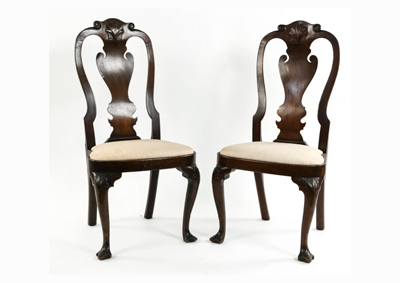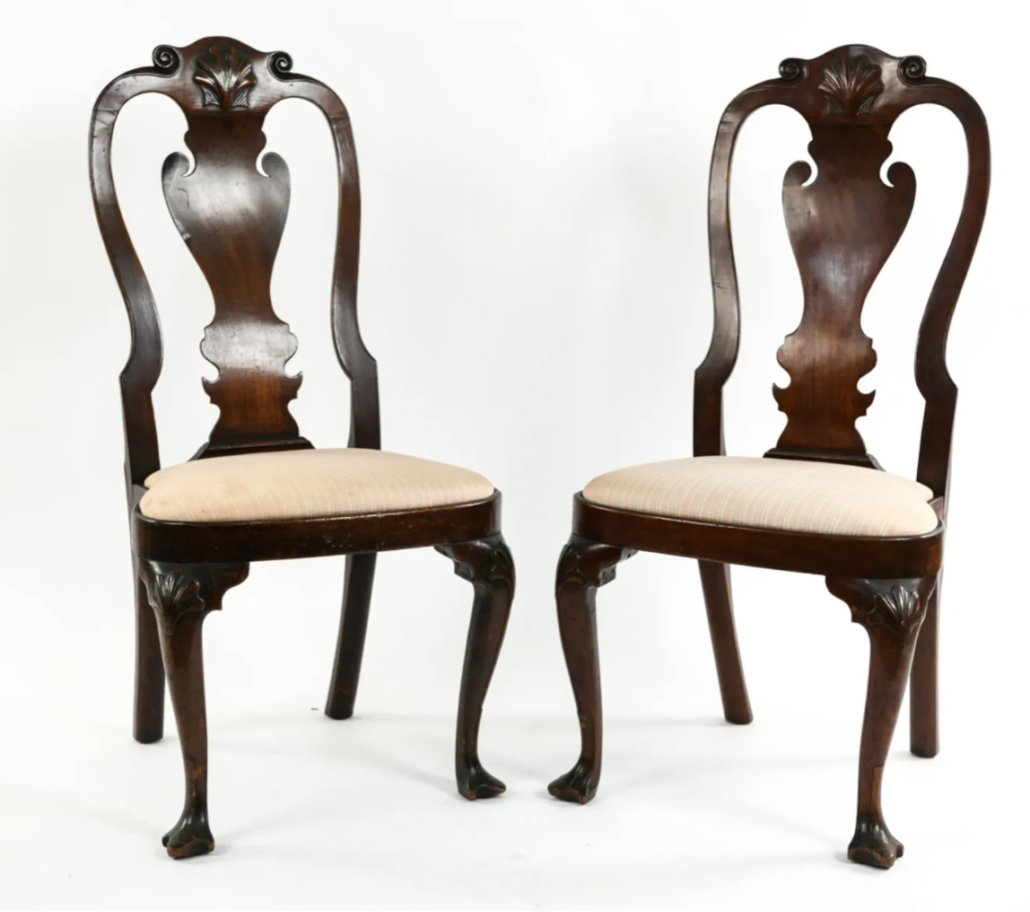
NEW YORK — While heavily carved furniture is not in vogue today, carved embellishments on American furniture of the 18th and 19th centuries elevated mundane household fittings to fine art. Their motifs can range from simple carved cabriole legs and relatively plain ornamentation to enthusiastic carving on nearly every inch of the available wood surface. Commonly seen imagery ranges from seashells and foliate scrolling to patriotic motifs characteristic of the American Empire era. Other forms of carving become progressively more intricate and include mythological, figural and animal elements in relief.
A popular mid-18th century style was Queen Anne, named for the British monarch who reigned from 1702 to 1714. Queen Anne furniture was typically plain with little surface decoration although it often was embellished with carved seashell motifs as well as floral and foliate designs. Splat backs (a term that describes the center support panel of a chair back) usually were elaborately carved, as seen in a pair of Philadelphia Queen Anne side chairs that earned $46,000 plus the buyer’s premium in February 2020 at Westport Auction.
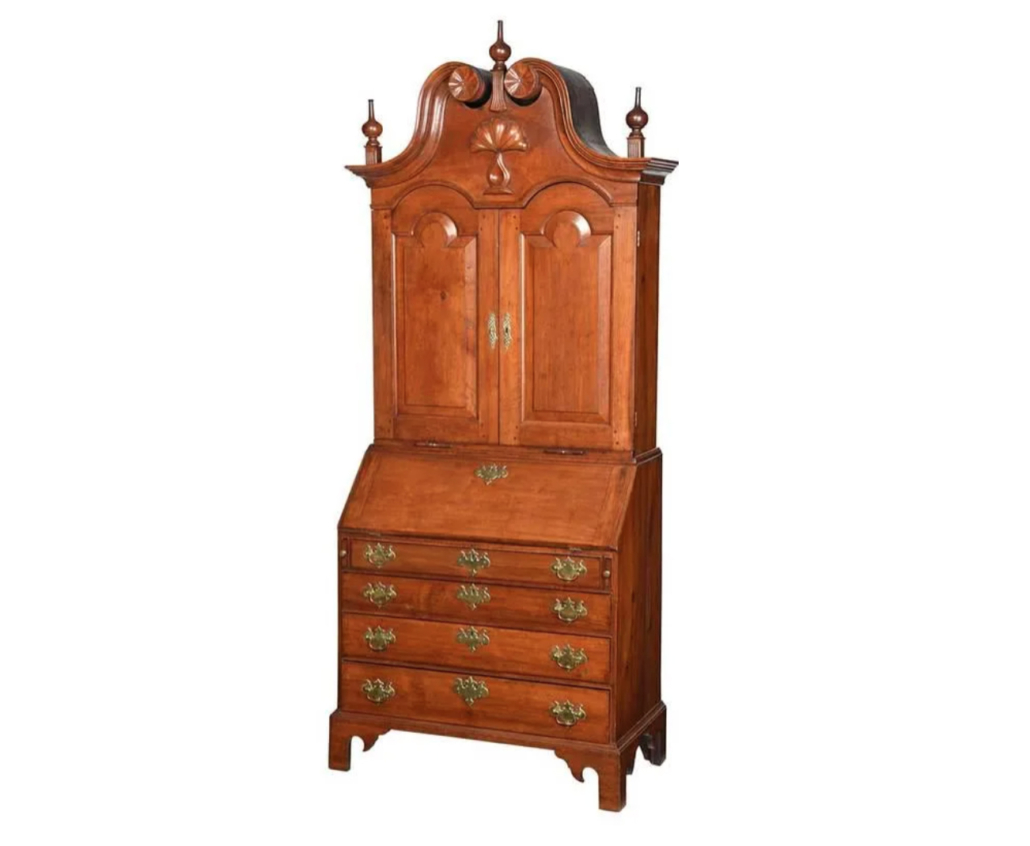
Chippendale furniture created in the 18th century was often profusely carved, and shell carving motifs appeared often. An American Chippendale desk and bookcase with carved rosettes and applied carving on the tympanum, as well as two scalloped and shell carved doors, made $38,000 plus the buyer’s premium in March 2020 at Brunk Auctions.
Ornate carving flourished during the Rococo Revival period of the mid-19th century, and its masters included New York cabinetmakers such as Herter Brothers, R.J. Horner, Duncan Phyfe and Alexander Roux. Even as industrialization revolutionized the economy and how products were made, high end and intricate furniture continued to be fashioned by hand and in small workshops with impeccable craftsmanship and fine decoration. An exuberantly carved rosewood dressing table, produced in New York in the mid-19th century, possibly by Alexander Roux, brought $77,000 plus the buyer’s premium in November 2017 at Neal Auction Company. The piece boasts an exaggerated and arched crest, a fruit and flower cartouche flanked by putti, winding foliate scrolls, mythological bird supports, and lavishly carved cabriole legs.

“Of all the New York Rococo-revival cabinetmakers, Roux was best recognized for frequently including mythological, animal, and human figures in his elaborate pieces,” according to the catalog notes for the dressing table. The mythological birds flanking the mirror are similar to those on a Roux sideboard that is in the collection of the Metropolitan Museum of Art.
John Henry Belter’s furniture is renowned for its ornate carving, which is on full display in an unusual rosewood parlor suite that sold for $85,000 plus the buyer’s premium in January 2018 at Neal Auction Company. A unicorn among Belter’s work, the set has exaggerated scrolled backs and Louis XVI-style fluted legs instead of the Louis XV-style cabriole legs Belter more typically used.
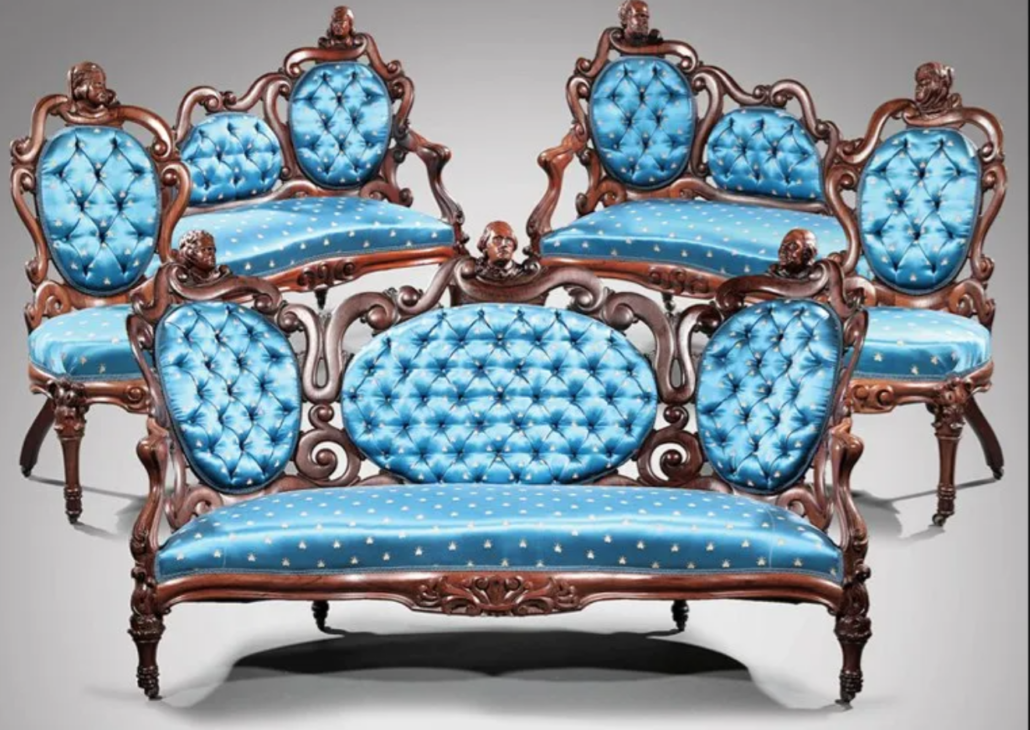
“The suite, which prominently features carved busts of American political and European literary luminaries, is reflective of a specific moment in mid-19th century US history and pays homage to the identity and idealism of the young and expanding American republic,” according to the auction catalog notes. The busts, which surmount the settee for example, picture George Washington, Benjamin Franklin and Thomas Jefferson.
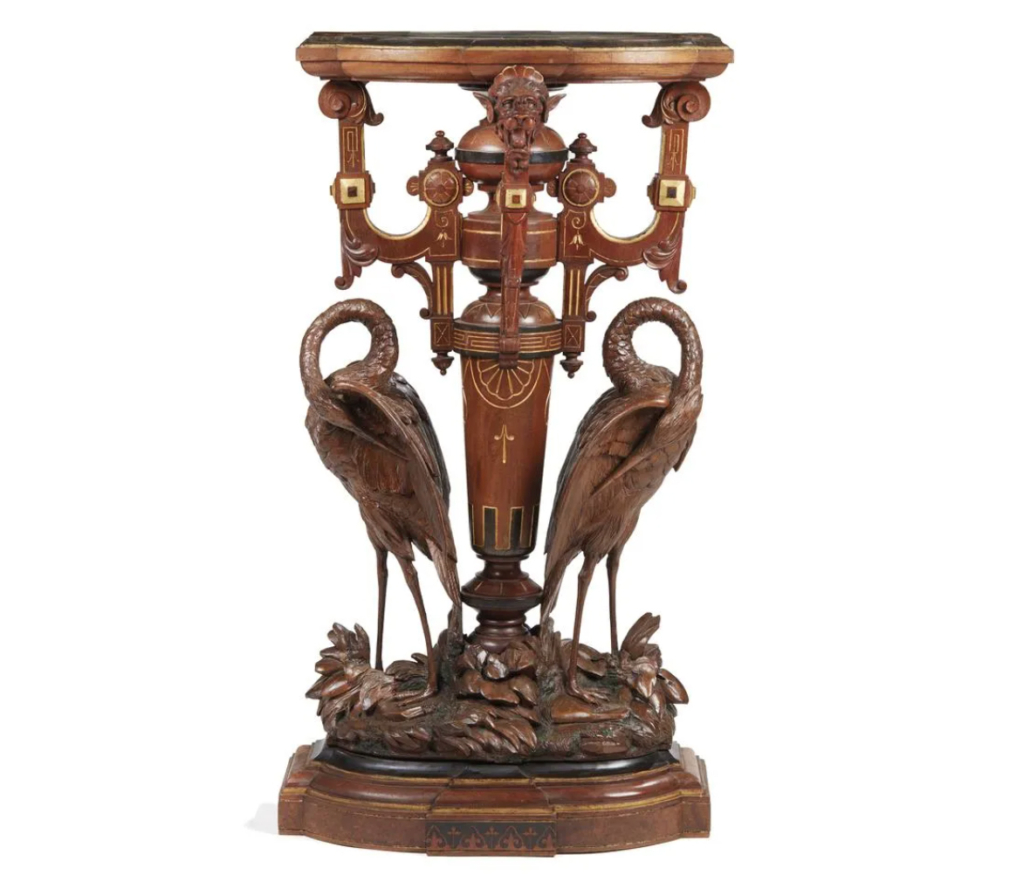
A late 19th-century American Renaissance Revival parcel-gilt and carved walnut pedestal with crane accents, attributed to New York-based Herter Brothers, realized $22,500 plus the buyer’s premium in January 2020 at Witherell’s. Among cabinetmakers, Herters’ work stands out for its indulgently detailed carvings and decoration. This piece is notable for its figural cranes as well as the ornate carving on the base.
Besides the obvious carving on the tops, fronts and sides of furniture, the style of carving on the legs can help distinguish what era it came from. Queen Anne legs were typically graceful cabriole legs that often ended in pad feet, and sometimes the odd hairy paw feet. Georgian pieces, by comparison, were a bit chunkier, while noted maker Duncan Phyfe often used reeded legs in the Federal furniture.
Whether sparingly done with a pre-modern minimalist approach or emphatically festooned with striking carved motifs, antique carved American furniture of all sorts has its contingents of ardent fans, and will likely continue to do so.


